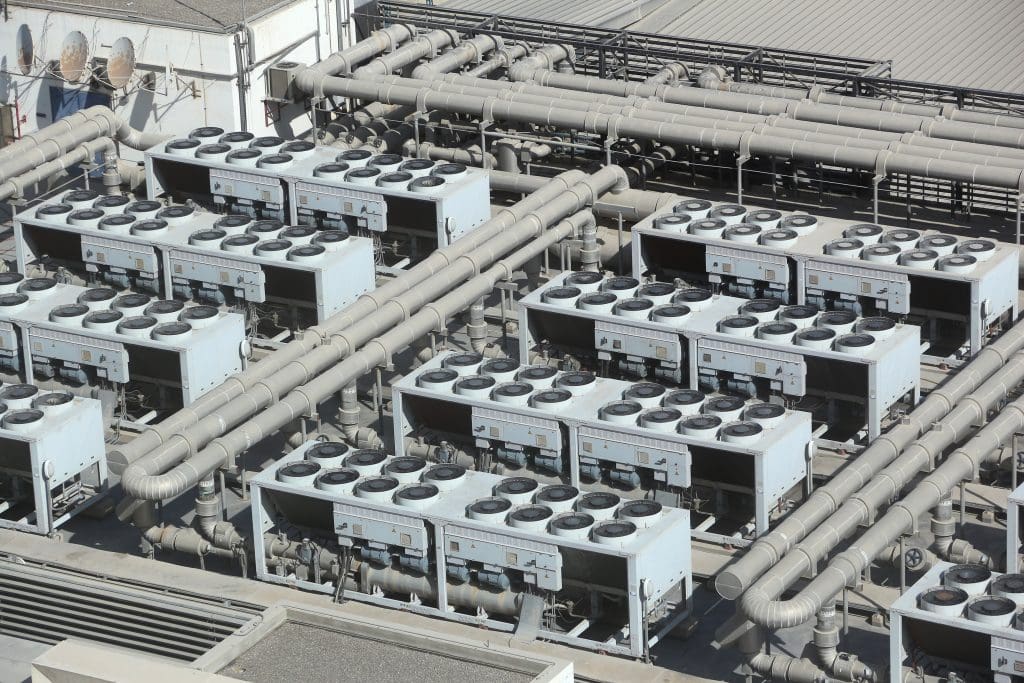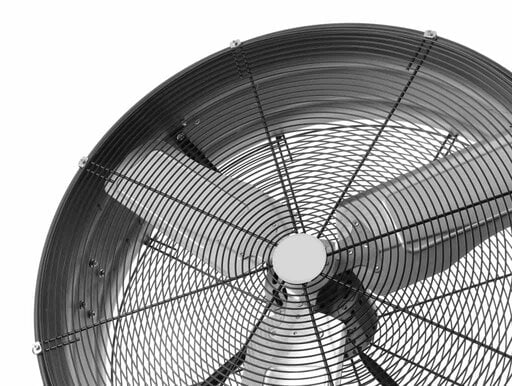Many warehouse facilities across America do not have AC units. Examples include FedEx sorting facilities, UPS hubs, some Amazon and Walmart warehouses, and much more.
As a result, the heat experienced while working inside any of these warehouse facilities can be unbearable.

Fortunately, you can beat the heat and ensure your productivity doesn’t take a hit if you follow some simple measures.
When working in a warehouse without air conditioning, best practices include wearing moisture-wicking clothes, taking frequent breaks, staying hydrated with cold water, and using battery-powered fans.
These best practices help regulate body heat, making work easier and more comfortable.
Why don’t many warehouses have air conditioning?

A lot of warehouses don’t have air conditioning because it’s economically unfeasible.
HVAC systems in industrial buildings like warehouses are expensive and need to meet local energy efficiency standards, requiring structural changes to the building.
Also, warehouses may have to keep dock doors open, making an air conditioner impractical.
A closer look at the factors preventing warehouses from having air conditioning:
Economically unfeasible
An air conditioning system for a warehouse will have a cooling plant, air handling unit, piping mains, piping branches, sheet metal ducts, and temperature controllers. It also requires excellent insulation to prevent cool air from escaping.
Furthermore, their capacity can vary from 5 – 2000 tons (5,000-2,000,000 kilograms), depending on building design, size, and the number of on-site workers. And given the size of a warehouse and the multitude of employees, they require high-capacity ACs to keep the space cool.
The total cost for purchasing and installing all these components and labor costs will be thousands, if not tens of thousands of dollars.
According to the Department of Energy, HVAC systems in commercial buildings account for 35% of the energy costs.
Impractical cooling
Warehouses with large open dock doors will allow cool air to escape. And the air conditioning system will have to use more energy to maintain appropriate temperatures.
Therefore, in these situations, not only is it impractical, but it also adds to the energy costs.
Compliance with local laws
Each state has energy efficiency requirements when it comes to air conditioning systems.
And investing in these devices to comply with local laws is expensive because warehouses will require structural changes (ceiling tiles, dry walls, floor, roof) to install air conditioners.
And any changes made to the warehouse should comply with local building codes. Furthermore, the cost of installing an air conditioning system will include construction costs.
Also, the warehouse may not be operational until all the work is complete, making it an expensive endeavor.
Best practices for working in a warehouse without air conditioning
To keep yourself cool while working in the hot summer months, here’s what you can do to stay safe:
1. Wear moisture-wicking clothes
The clothes you wear significantly affect how you feel while performing any physical activity. For instance, cotton clothes are great during summers as they are light.
However, the problem with cotton is that it absorbs your sweat quickly. Over time, it becomes uncomfortable to wear as the fabric becomes wet and heavy. Also, it sticks to your skin once it becomes wet, leading to discomfort.
A better option would be to wear moisture-wicking clothes. Unlike cotton, these fabrics don’t absorb water. Instead, they move it away from your skin towards the surface of the cloth.
The sweat evaporates from the material, keeps the garment dry, and keeps you cool. Clothes made from nylon, polyester, and polypropylene have excellent moisture-wicking properties.
2. Bring an insulated bottle of chilled water

According to a scientific study, drinking cold water while exercising in hot temperatures can help improve your endurance. You can carry cold water to work to keep your body cool.
Regular bottles aren’t practical as they allow the water to absorb heat from the surroundings, increasing its temperature.
However, insulated bottles such as Hydro Flask are an excellent option as the vacuum insulation ensures your cold water remains cold, even after several hours.
3. Take regular water breaks
Water is essential as it helps your body regulate its temperature. Make it a point to take water breaks regularly, as it’s easy to get carried away with your work and not pay attention to what your body is trying to tell you.
How much water you should consume depends on your activity level, age, climate, and weight.
If you’d like to know how much water you should consume, your doctor can provide this information.
4. Use a damp athletic cooling towel
Another way you can manage working in a warehouse without air conditioning is to use a damp athletic cooling towel. The cooling effect of these towels are activated by water.
There are a few good ones on Amazon.com that are made with premium materials that are safe for the skin and provide an instant cooling effect.
5. Use a small battery-powered fan

Portable fans are an excellent option for keeping you cool while working in the warehouse. They quicken the process of sweat evaporating from your skin.
They are especially good if your job doesn’t involve lots of moving around the warehouse, i.e., you mostly work in one station.
If management at your site allows it, you can get a Milwaukee durable and portable fan from Amazon.com. It’s cordless so you can easily transport it to and from work, and it has a powerful battery that will last you the entire day.
6. Wear a cooling vest
The purpose of cooling vests is to bring down your body heat by using the power of water to provide a cooling effect.
I recommend FlexiFreeze Ice Vest from Amazon.com, as they are lightweight to use and have removable ice panels, which makes it easy to swap them out when they no longer have a cooling effect.
7. Your body will get used to the heat
It might be hard to believe that you’ll ever adjust to working without air conditioning, but your body can and will get used to the heat.
According to UC Davis, the process of adjusting to the heat is called acclimatization and it can take workers up to two weeks to acclimate to it.
However, during those two weeks, you must take the necessary precautions like drinking more water, wearing breathable clothing, etc. to avoid falling ill.
8. Seek assistance if it becomes unbearably hot
Heat stroke is a real risk so if it gets too hot, be sure to inform someone in leadership or management so that you can keep yourself and your colleagues safe.